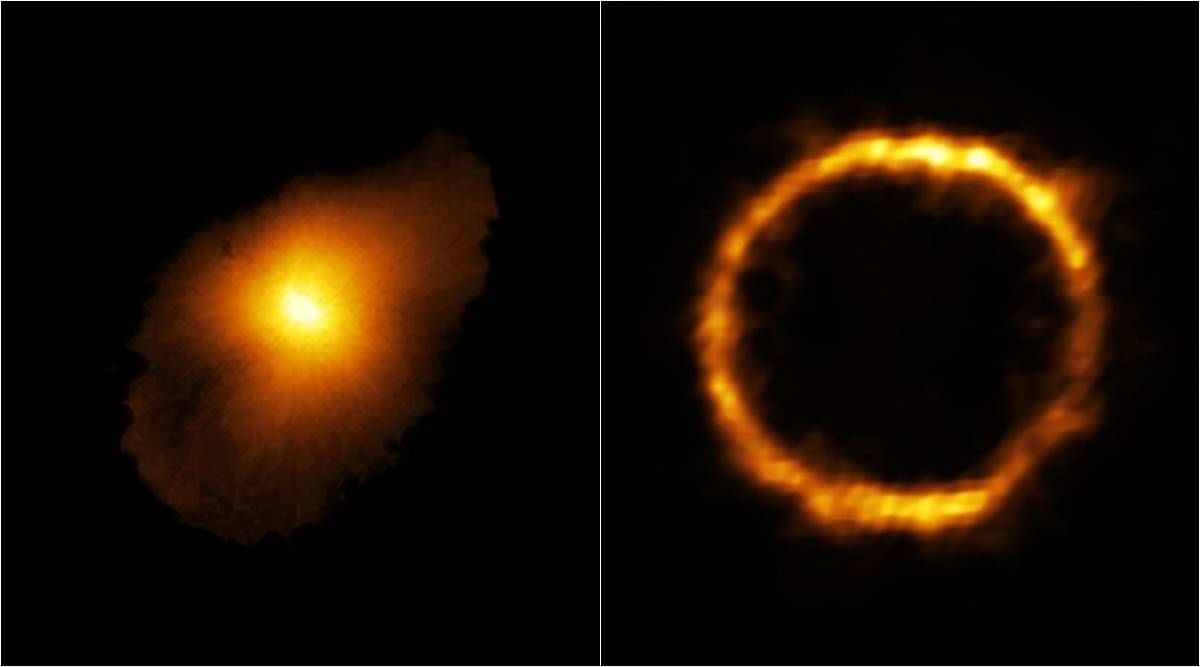
[ad_1]
 SPT0418 47 galaxy (Image Credit: ALMA/ ESO/ NAOJ/ NRAO/ Rizzo et al)
SPT0418 47 galaxy (Image Credit: ALMA/ ESO/ NAOJ/ NRAO/ Rizzo et al)
Astronomers have made a major breakthrough as they have discovered the most distant look-alike galaxy of our Milky Way. The discovery was done with the help of Atacama Large Millimeter Array (ALMA Radio Telescope) located in the Atacama Desert of northern Chile. The extremely distant galaxy called SPT0418-47 is 12 billion light-years away from us. This means that the Milky Way galaxy look-alike that astronomers spotted was like this 12 billion years ago. On the other hand, the National Aeronautics and Space Administration (NASA) believes that our universe is around 13 billion years – give or take a few billion which makes the discovery more fascinating.
Two similar features
Astronomers were surprised to see SPT0418-47 have two similar features as our galaxy. They did not expect it to be organised enough to have disks and bulges. Instead, they expected it to have “turbulent and unstable” features. The SPT0418-47 has a rotating flat disk similar to our galaxy and a galactic bulge which shows a large group of stars in close proximity towards the centre.
“This unexpected discovery challenges our understanding of how galaxies form, giving new insights into the past of our universe,” the statement said.
The research led by Francesca Rizzo of the Max Planck Institute for Astrophysics in Germany also explained why it is considered a big breakthrough. Rizzo’s research was published in a peer-reviewed journal Nature on August 12, 2020.
“This result represents a breakthrough in the field of galaxy formation, showing that the structures that we observe in nearby spiral galaxies and in our Milky Way were already in place 12 billion years ago,” Rizzo said.
The astronomers also believe that studying distant galaxies like SPT0418-47 will help them find answers to how galaxies formed and evolved after the Big Bang.
How the pictures were obtained
In the image released by ALMA, a near-perfect ring of light can be observed. However, this image was captured via gravitational lensing, a process that involves a second massive galaxy between us and the one we are capturing. The ring around the galaxy formed due to the gravity of the intervening galaxy which causes the light to bend.
ALSO READ | NASA releases some stunning pictures of the Mars: Take a look here
However, the original shape of the galaxy was obtained by computer modelling with the help of data incorporated data from the lensed image and other galaxies being observed.
How SPTO418-47 was spotted
“Because these galaxies are so far away, detailed observations with even the most powerful telescopes are almost impossible as the galaxies appear small and faint. The team overcame this obstacle by using a nearby galaxy as a powerful magnifying glass – an effect known as gravitational lensing – allowing ALMA to see into the distant past in unprecedented detail. In this effect, the gravitational pull from the nearby galaxy distorts and bends the light from the distant galaxy, causing it to appear misshapen and magnified.”
ALSO READ | Indian scientists develop sustainable process for making brick-like structures on Moon
“The gravitationally lensed, distant galaxy appears as a near-perfect ring of light around the nearby galaxy, thanks to their almost exact alignment. The research team reconstructed the distant galaxy’s true shape and the motion of its gas from the ALMA data using a new computer modeling technique,” in a statement by astronomers.
📣 The Indian Express is now on Telegram. Click here to join our channel (@indianexpress) and stay updated with the latest headlines
For all the latest Technology News, download Indian Express App.
© IE Online Media Services Pvt Ltd
[ad_2]
Source link